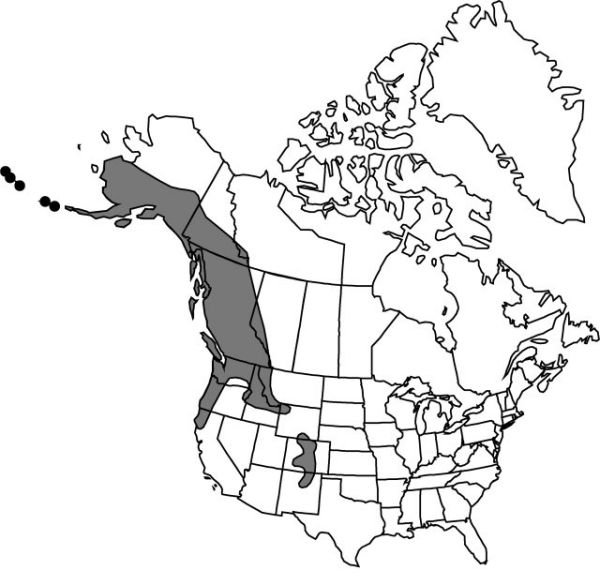Listera cordata var. nephrophylla
Fl. Aleut. Isl., 145. 1937.
Leaves: blade 2–4 × 1.8–3.8 cm. Flowers green to yellow-green; pedicels slender, 3 mm; sepals 4 × 1.5 mm; petals 1.5–2.5 × 0.5–1 mm; lip 5–6 × 1–1.5 mm. 2n = 36, 38
Phenology: Flowering Jun–Jul.
Habitat: Shaded humus of rich, well-drained, coniferous or coniferous-hardwood forest
Elevation: 1500–3500 m
Distribution

Alta., B.C., N.W.T., Yukon, Alaska, Calif., Colo., Idaho, Mont., N.Mex., Oreg., Wash., Wyo.
Discussion
Taxonomists have differed about whether these two varieties deserve to be recognized. The arguments for maintaining the varieties as distinct (C. A. Luer 1975) and against maintaining them as distinct (D. S. Correll 1950; C. L. Hitchcock et al. 1955–1969, vol. 5; J. A. Calder and R. L. Taylor 1968; E. Hultén 1941–1950, vol. 3) have been summarized (R. A. Coleman 1995). Although leaf size and shape overlap, the leaves of the western plants are broader than long, those of the eastern plants longer than broad. Nonetheless, the distinction is not sufficient to maintain separate varieties (J. A. Calder and R. L. Taylor 1968). In the present treatment we have taken a conservative approach and include the two varieties. We recognize, however, that in North America, Listera cordata is a highly variable species: although some plants easily fit one or the other of the described varieties, a host of intermediates do not fit either. Further study of this species “complex” is needed.
Selected References
None.